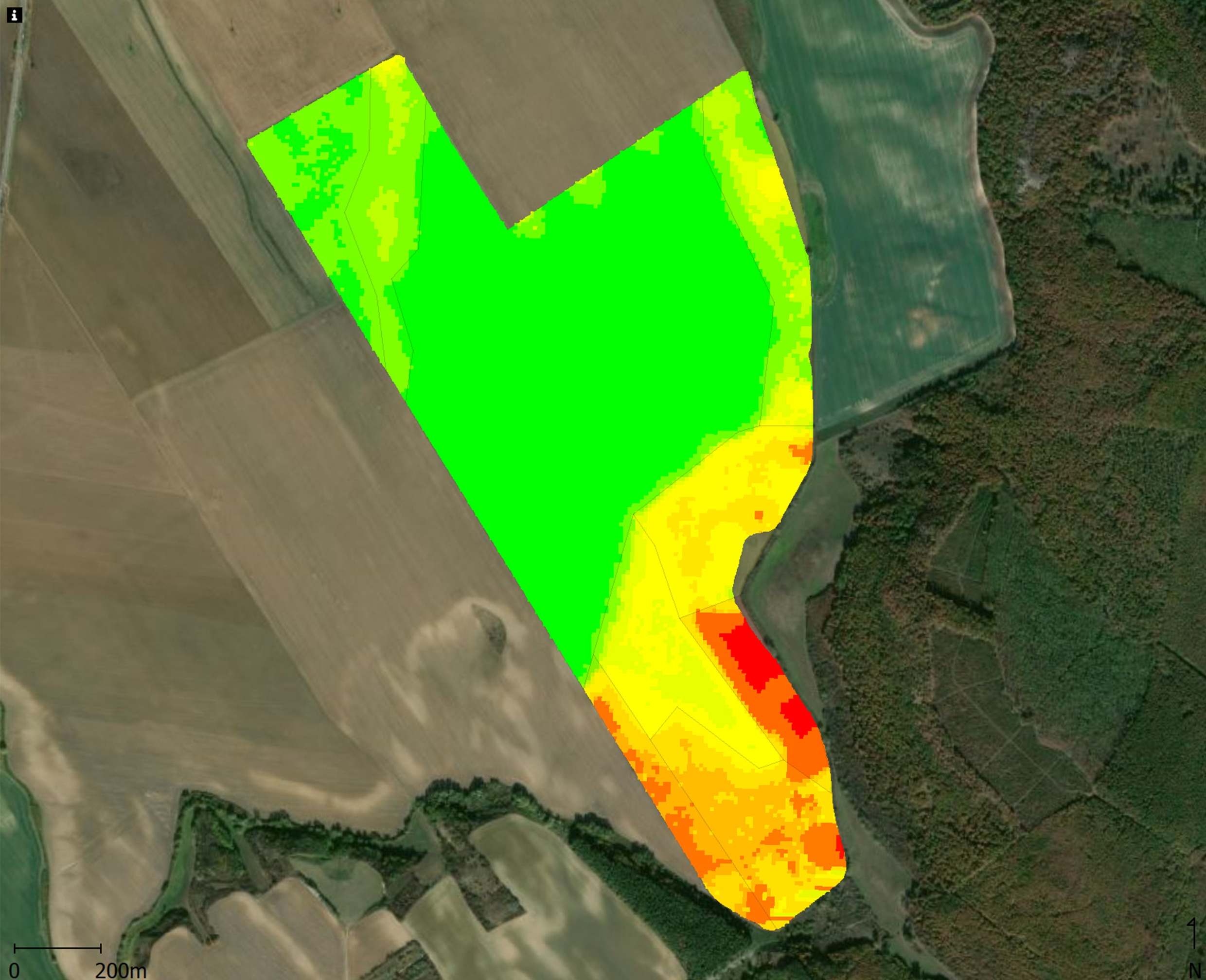Our digital product
How do we create zone-specific application maps from yield data and remote sensing imagery?
- We transform the raw yield data collected by the harvester into geospatial data ready for further analysis and clean it.
- From the cleaned data, we create management zones, taking into account elevation, soil variations, remote sensing data, and other site-specific characteristics.
- After consulting with the farmer, we dose the zones according to the treatments and upload the final map to the equipment’s monitor.
- We measure the applications afterwards if needed, so the results of the treatments can be seen.
- After harvest, we further optimise our maps based on the latest yield data.
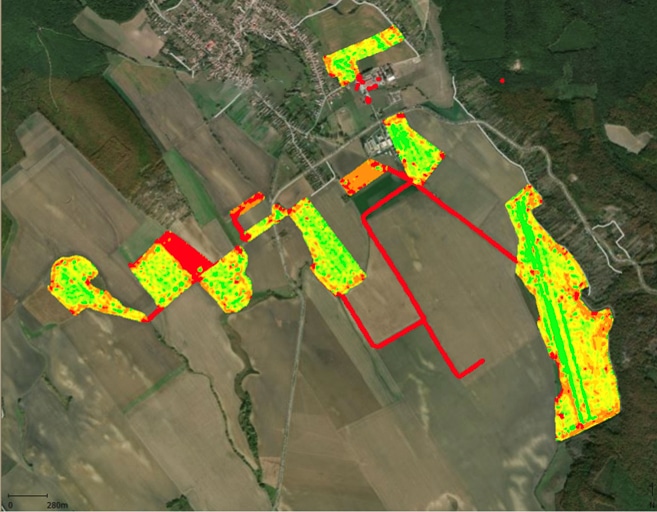
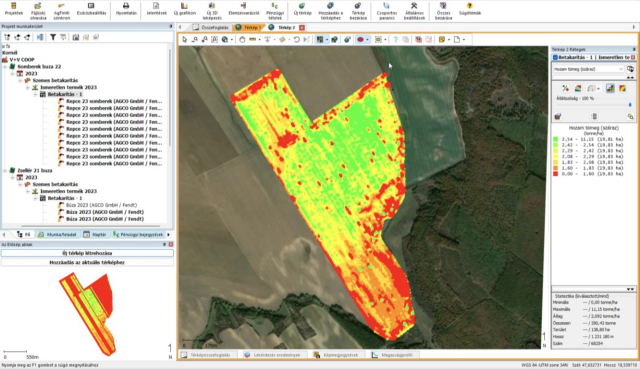
Our workflow in a nutshell
The raw data contains errors that need to be corrected.
- Below is the raw yield map for an oilseed rape field from 2023, imported into Ag Leader SMS software.
- The end of line turns and the false yield fluctuations due to terrain elevation are clearly visible in the green and red areas.
- By removing unrealistic and outlier values and validating uncalibrated data, we clean the dataset. During this process, end of line turns, duplicate rows, and incorrect values are eliminated.
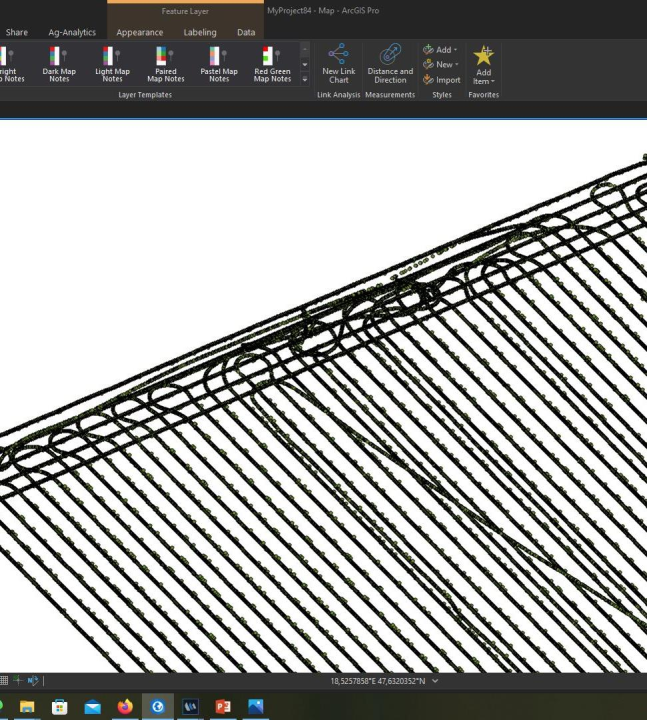
End of line turns
Exported from Ag Leader SMS as a .shp file and visualised in ArcGIS Pro.
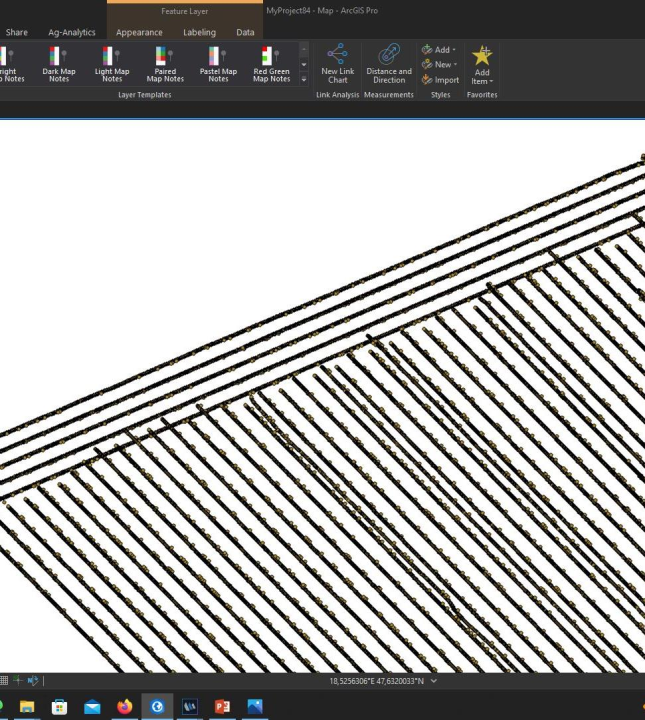
Without end of line turns
Exported from Ag Leader SMS as a .shp file and visualised in ArcGIS Pro.
Distribution of elevations above sea level
The 2023 oilseed rape field shows that the elevations values between 232 and 270 m are correlated well with the yields.
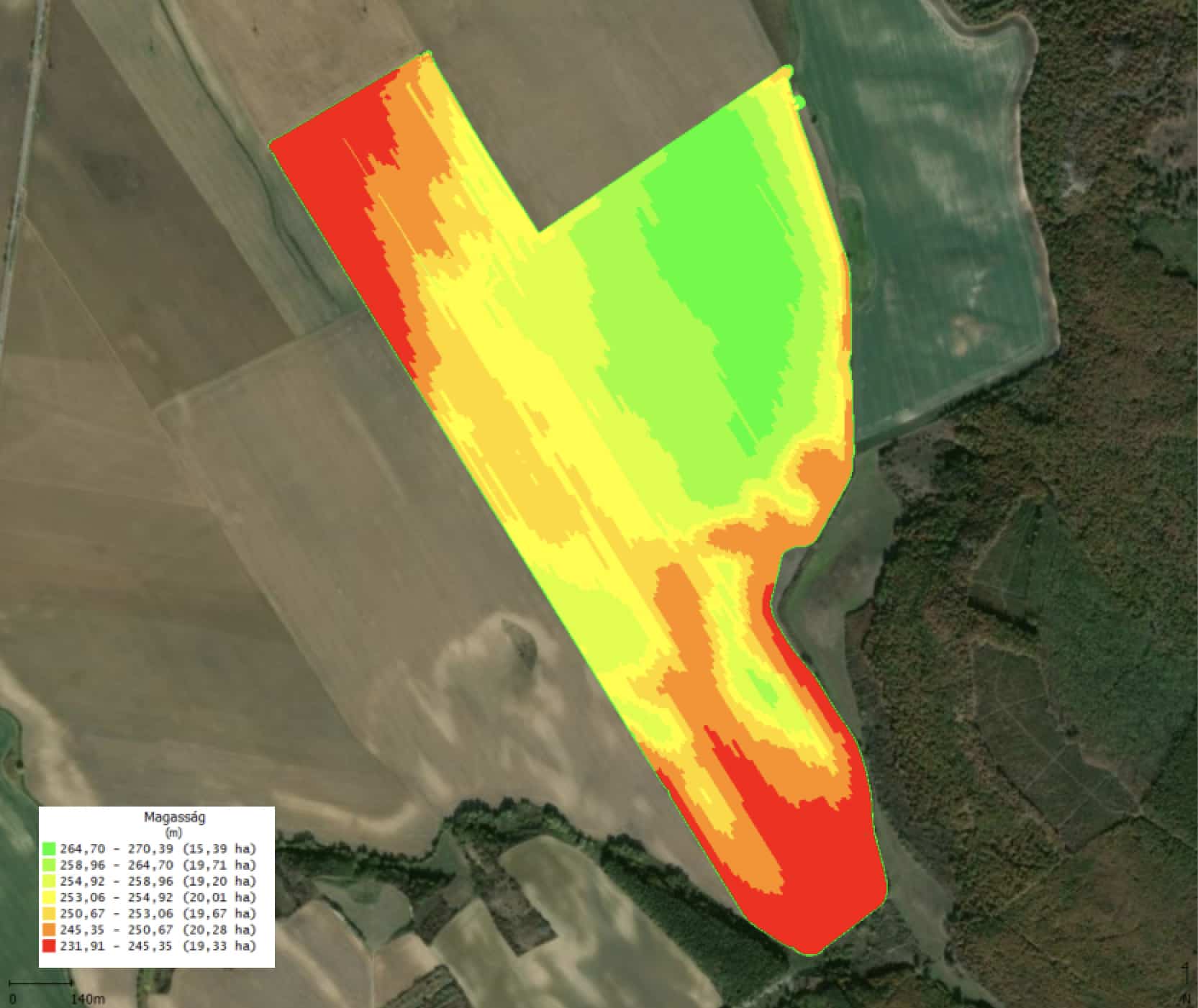
Yield data variation for management zone delineation
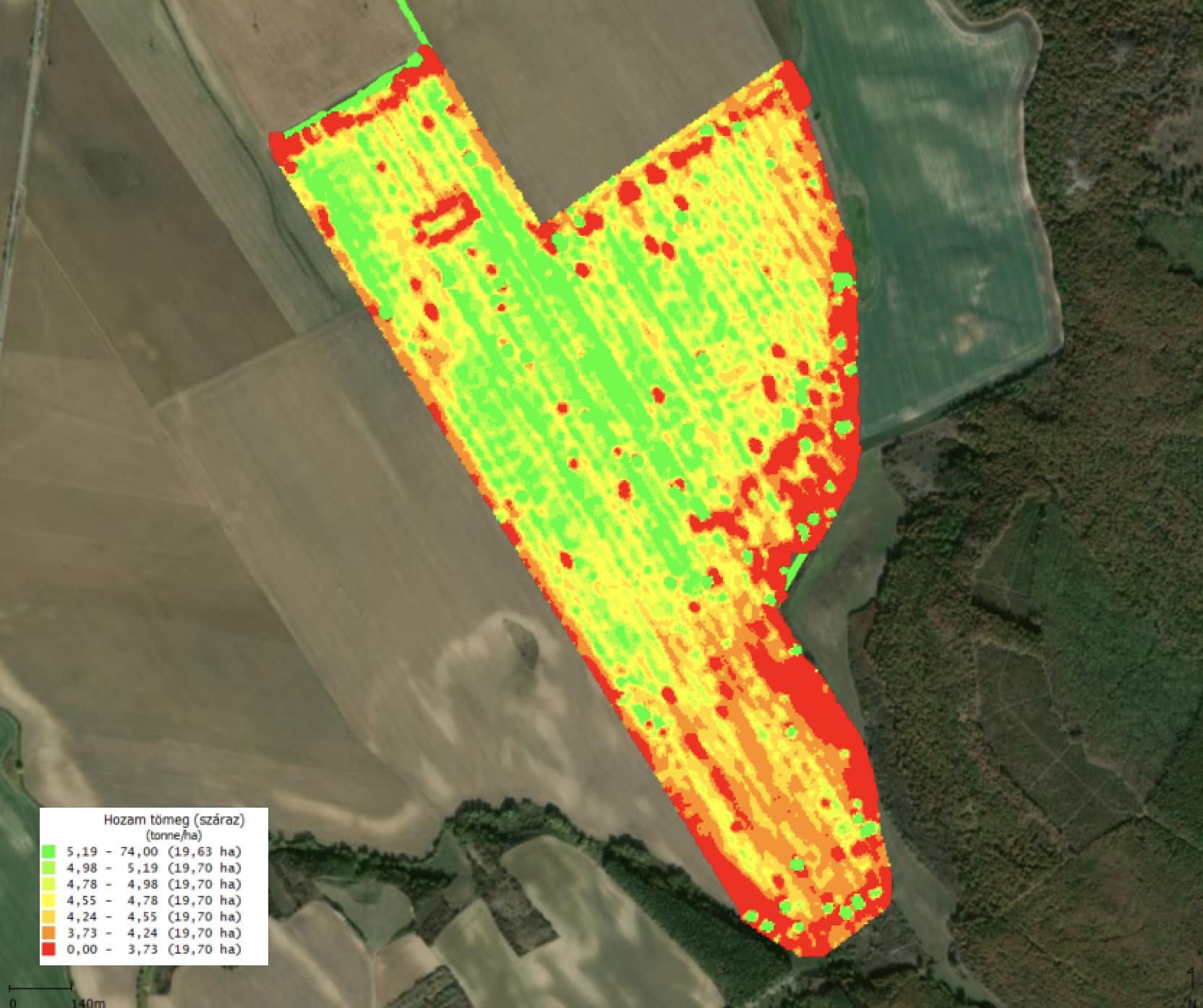
2021 – oil seed rape
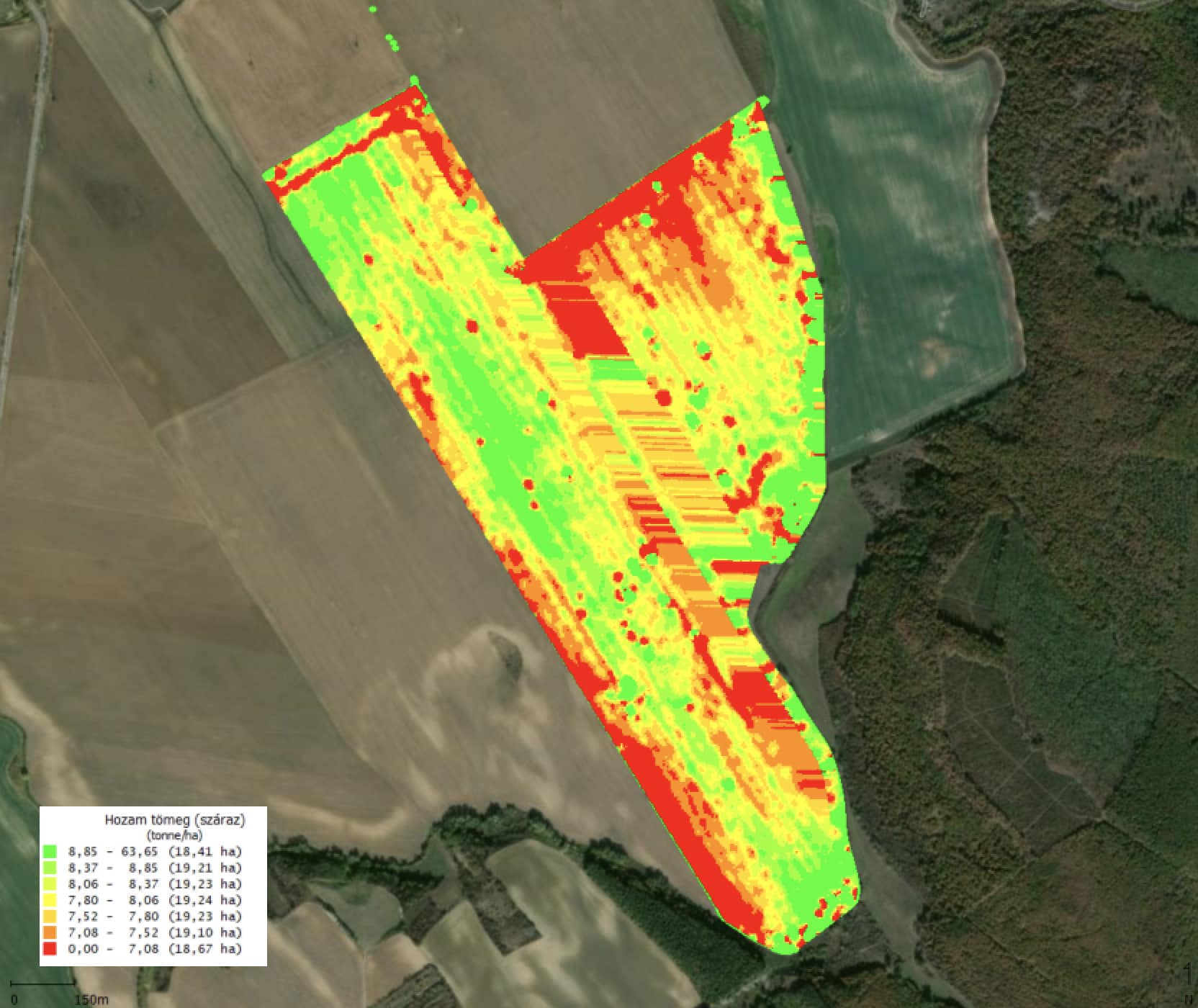
2022 – winter wheat
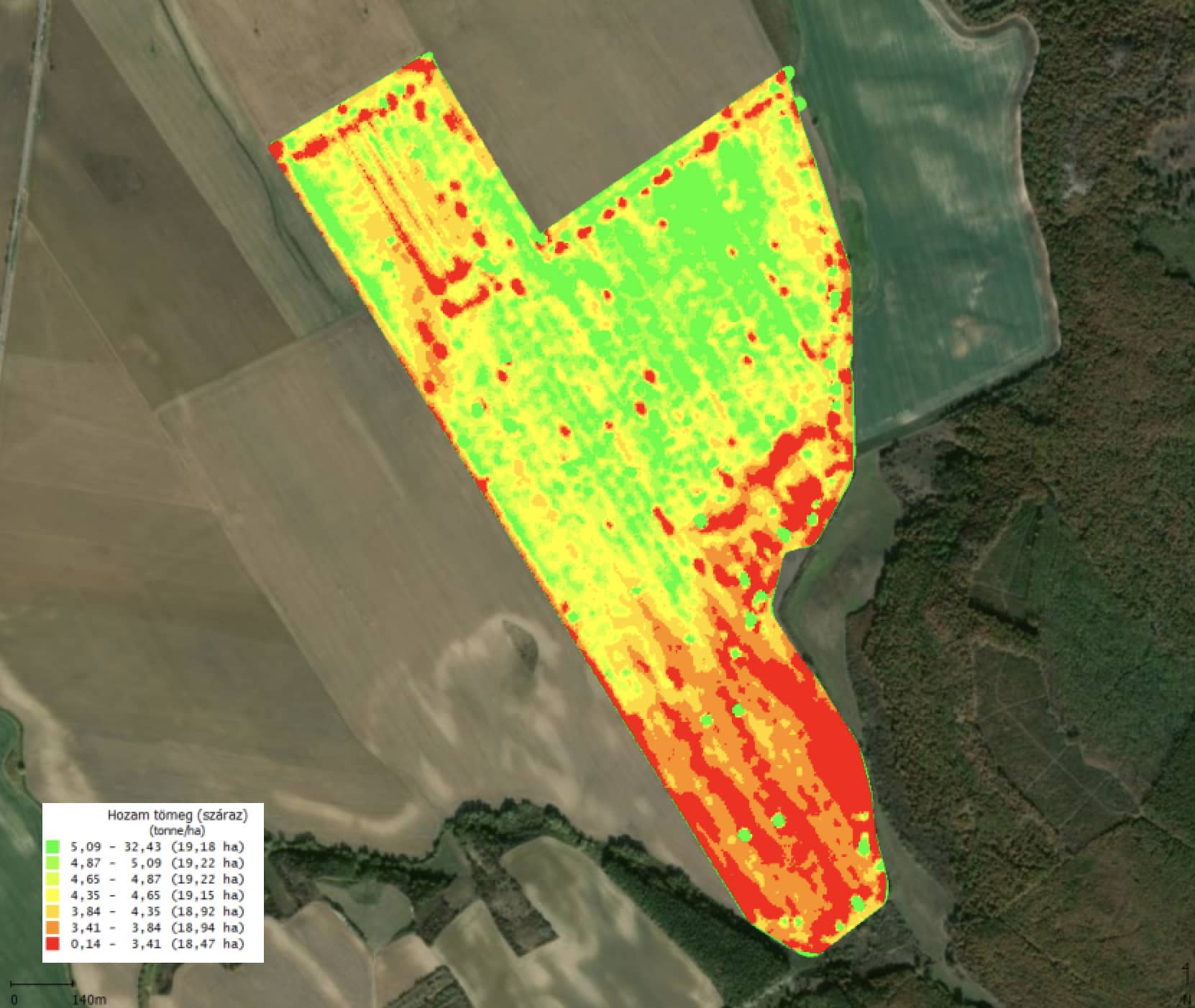
2023 – oilseed rape
The images show that each year is different, which is why we work with as many years of available yield data as possible. However, averaging is not always the solution, so we always examine environmental and soil factors as well.
How different NDVI values affect the yield and the creation of zones within a vegetation period
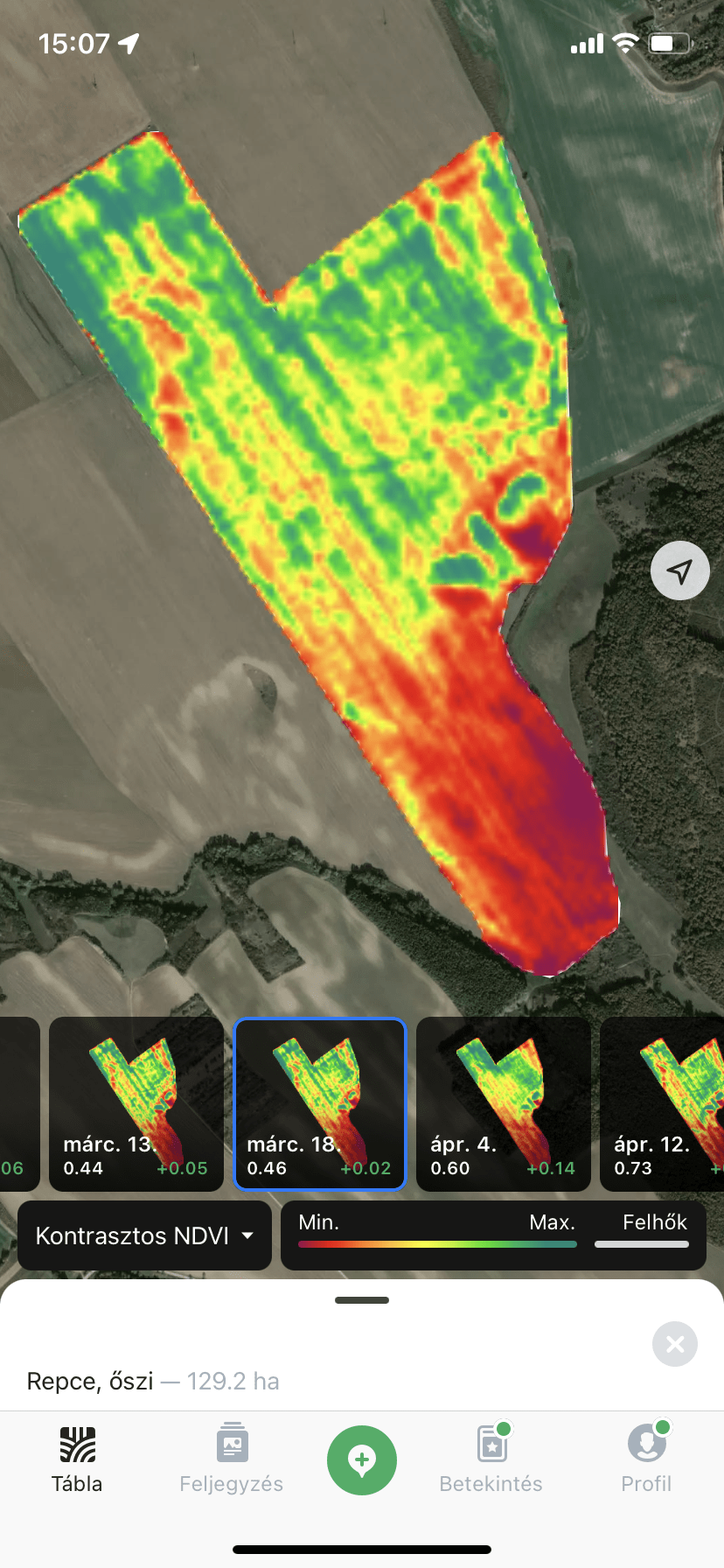
March 18, 2023 – Oilseed rape
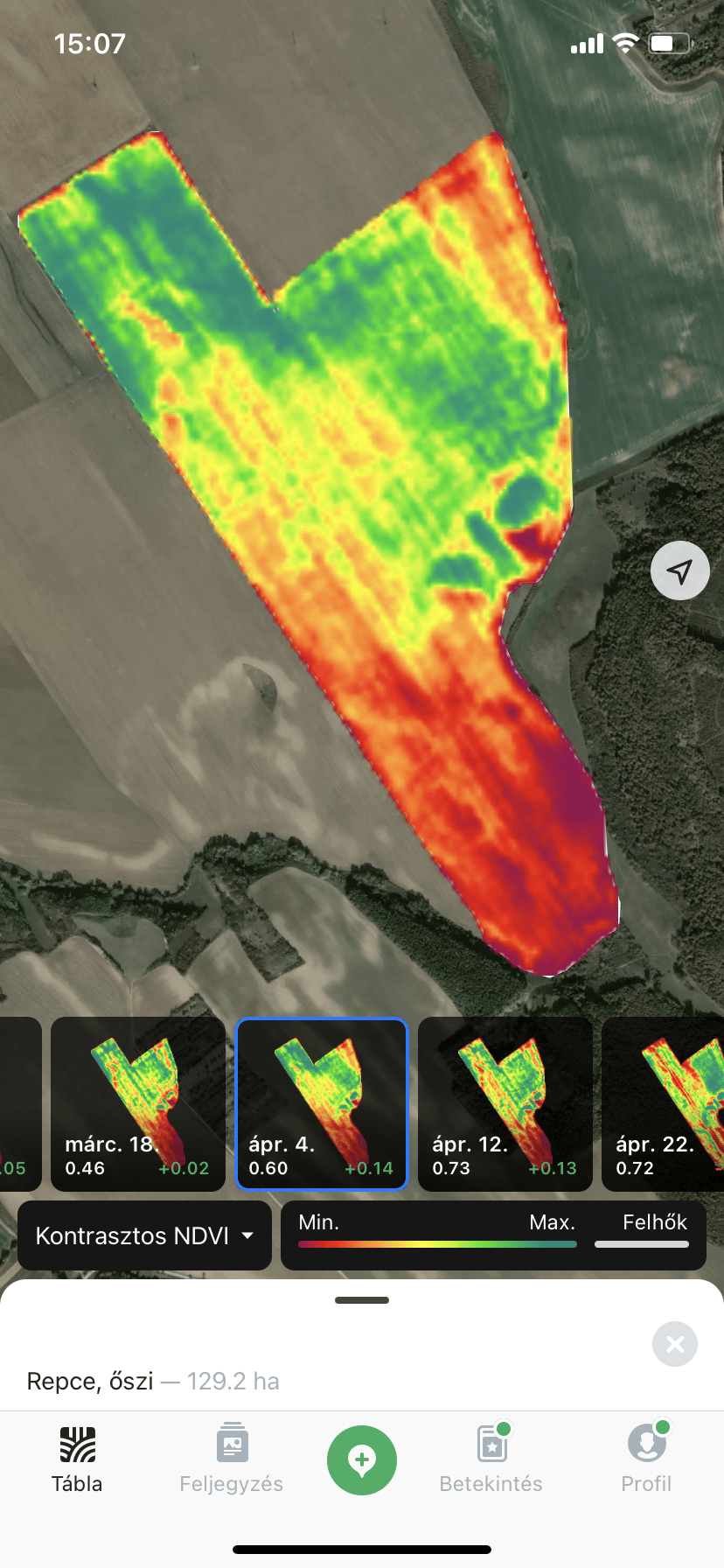
April 4, 2023 – Oilseed rape
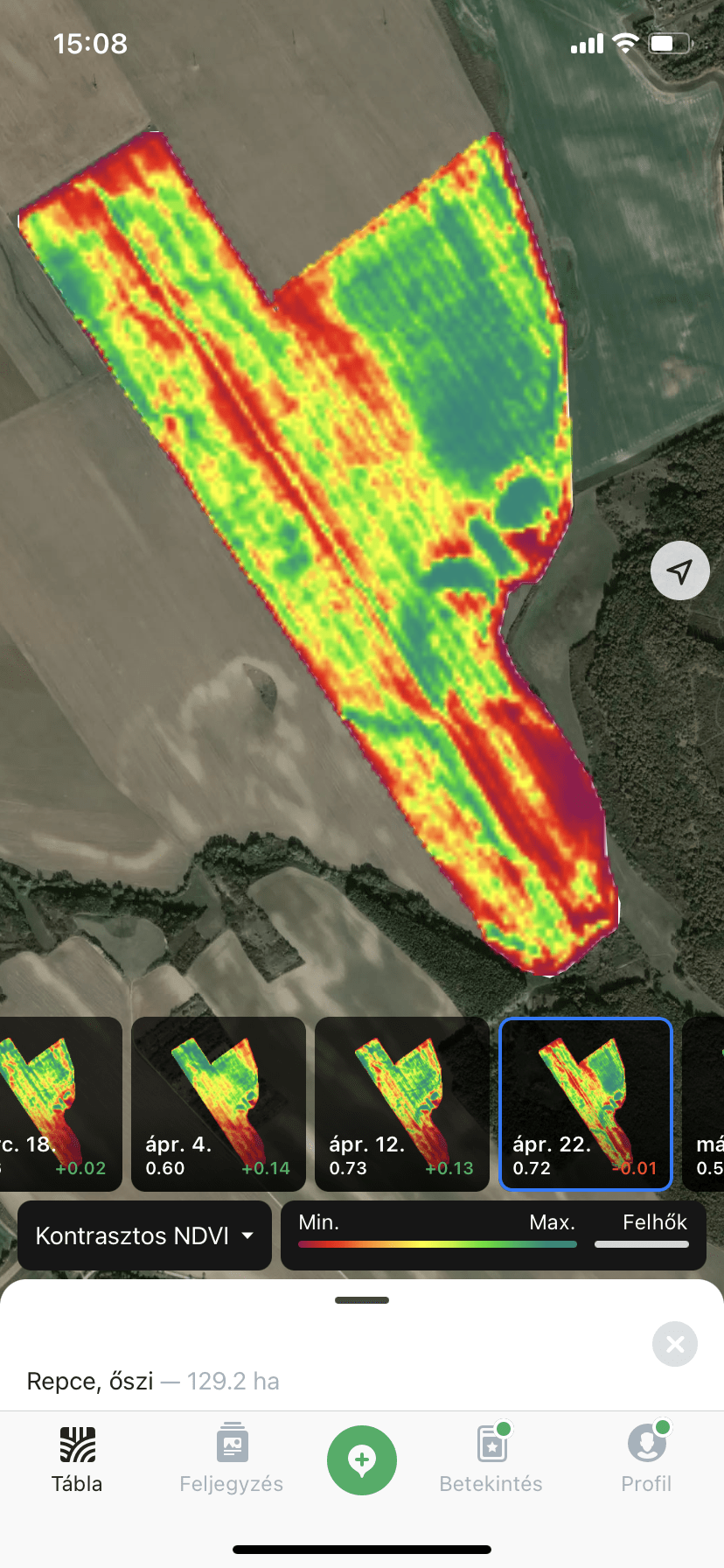
April 22, 2023 – Oilseed rape
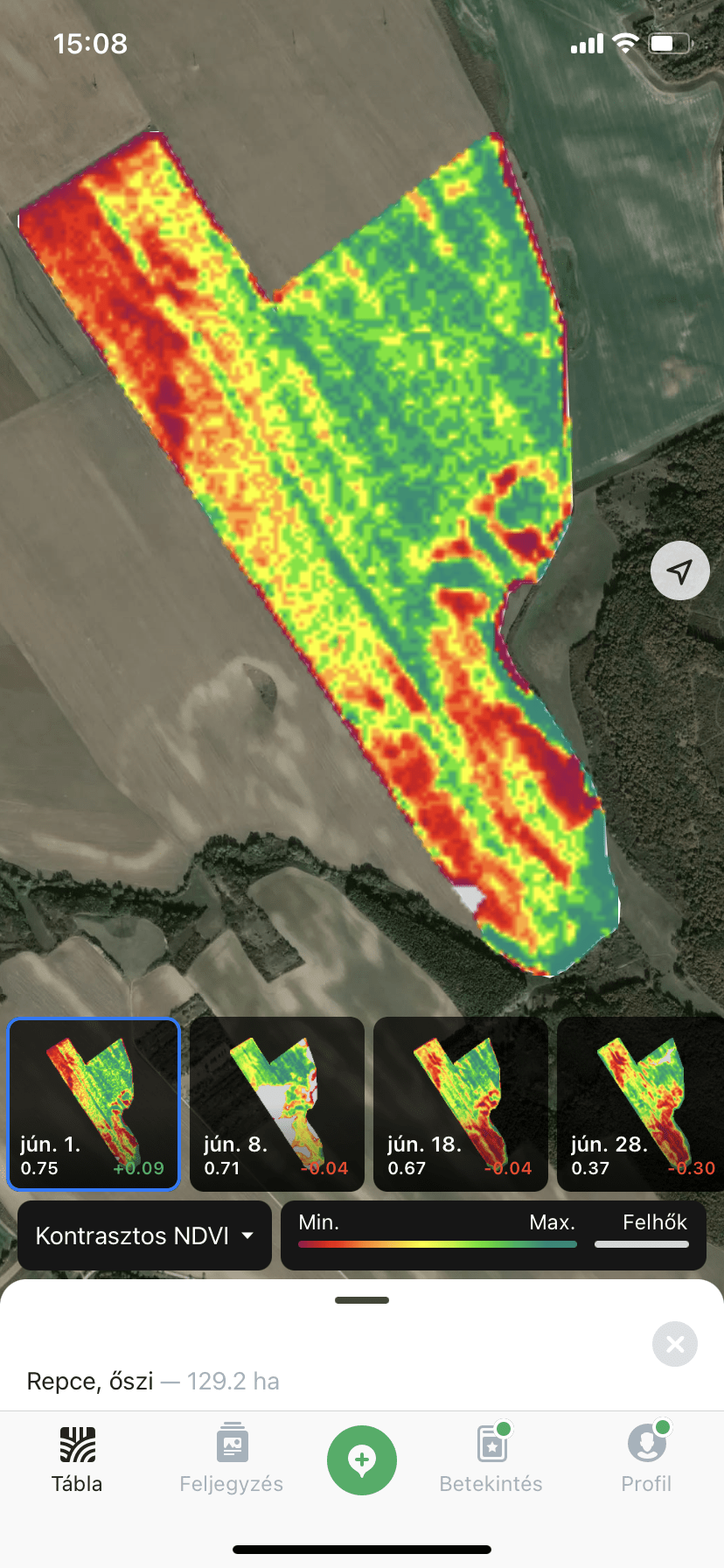
June 1, 2023 – Oilseed rape
If there is not enough yield data available, we also use NDVI images to create management zones. However, it is very important that the images are taken at the appropriate phenological stage.
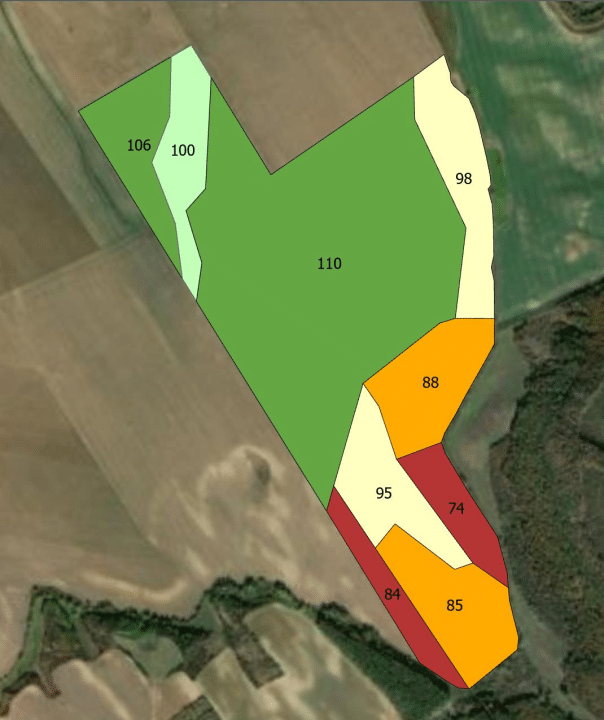
Creating management zones
As the final result, using all the necessary data, we create the management zones and determine their relative yield efficiency values based on cell-level yield measurements. These values show the percentage difference of each zone from the field average.
The relative yield efficiency values for the zones are based on a three-year average.
Dose values in each zones
Compared to conventional treatment, a single Nitrosol application can achieve a fertiliser saving of 2.3 cubic metres without yield loss. The numbers show the dose rates in each zones expressed in litres per hectare. The cultivated area is 132 hectares.
This means a 9.89% fertiliser saving without any yield loss.
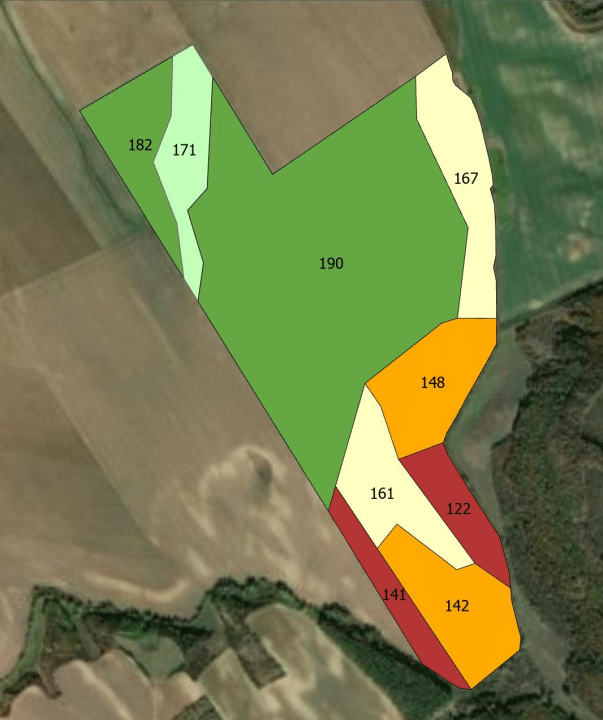
Kérj árajánlatot a saját Gazdaságodra!
Csatlakozz az innováció és hatékonyság világához a mezőgazdaságban.
Keress minket bizalommal!
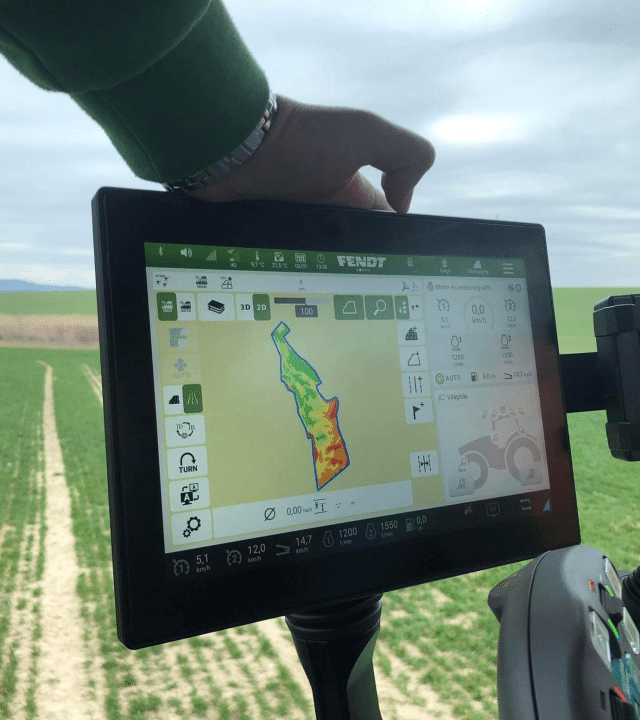
Variable Rate Application map in work
The ready to use VRA map uploaded to the applicator’s monitor during operation.
Variable rate spraying demonstration
We held a variable rate spraying demonstration in Tokod.
The video clearly shows the section control, the dose changes, and the operation of the system.
The completed spraying map
We measured the results of the Nitrosol application, which clearly showed small variations that appeared on slopes of 12–17%.
Overall, 0.44% more fertiliser was applied than needed by the VRA map. This difference is negligible, and the application was completed to the highest quality standards.
